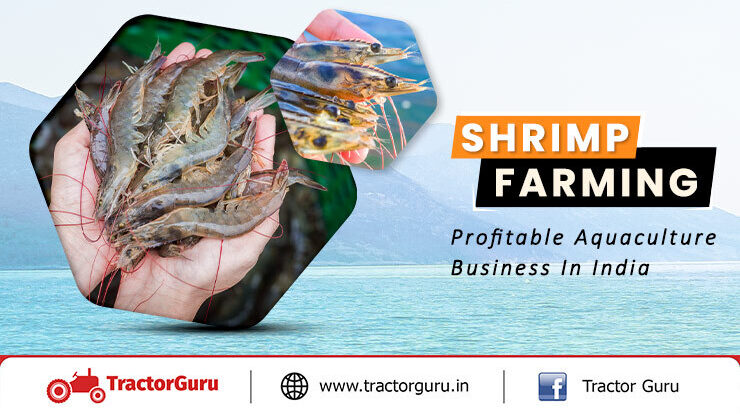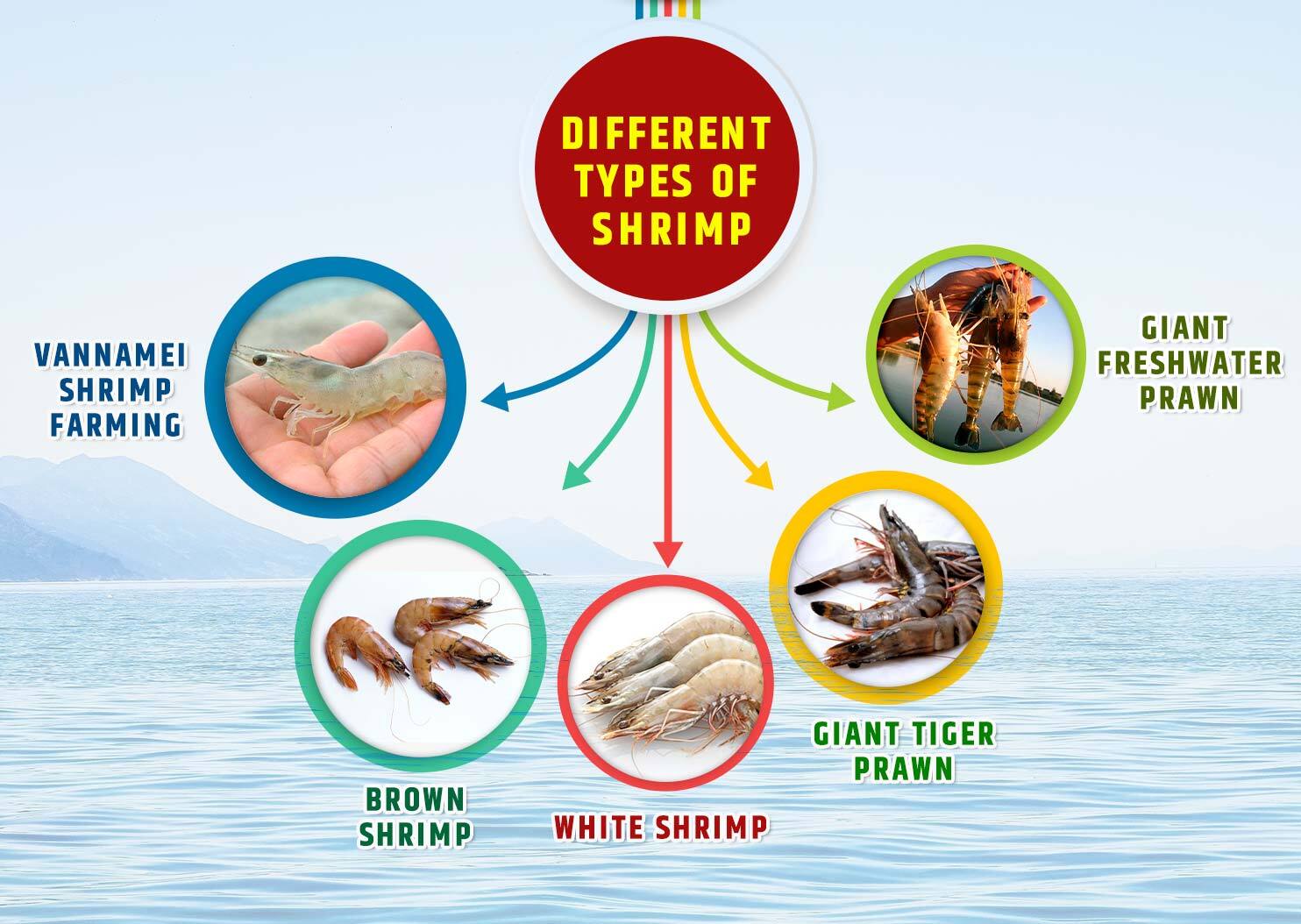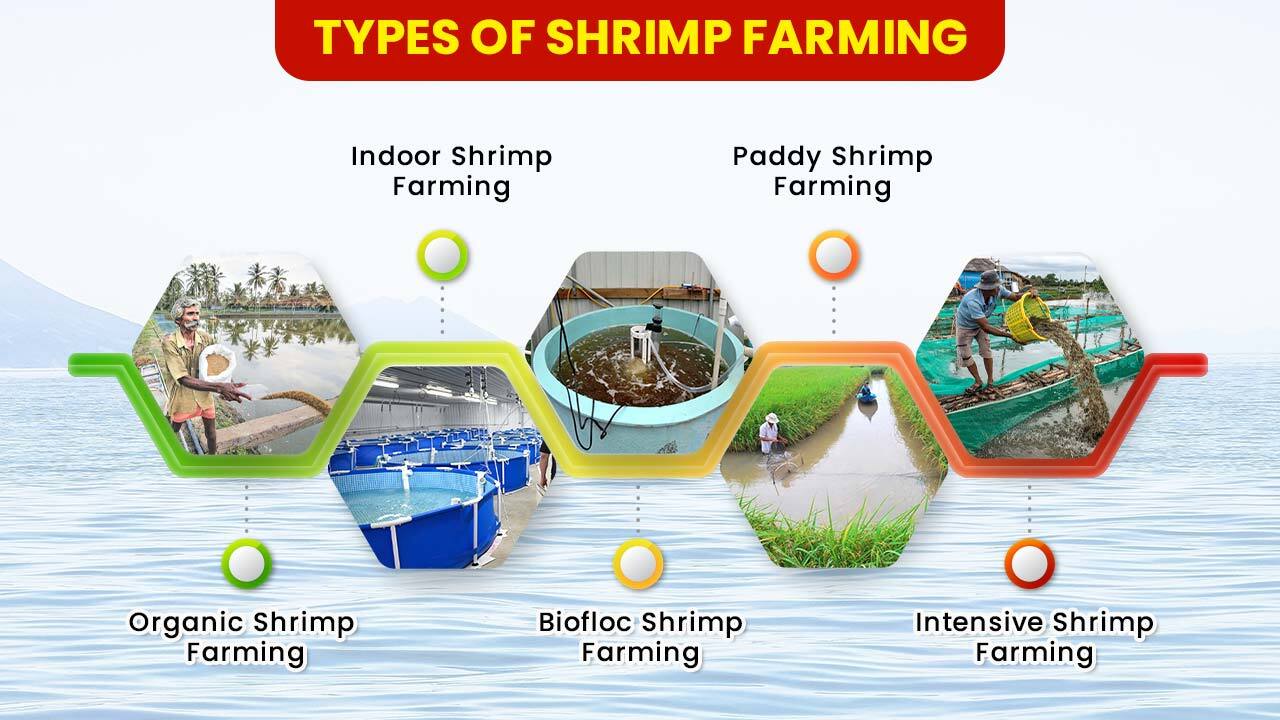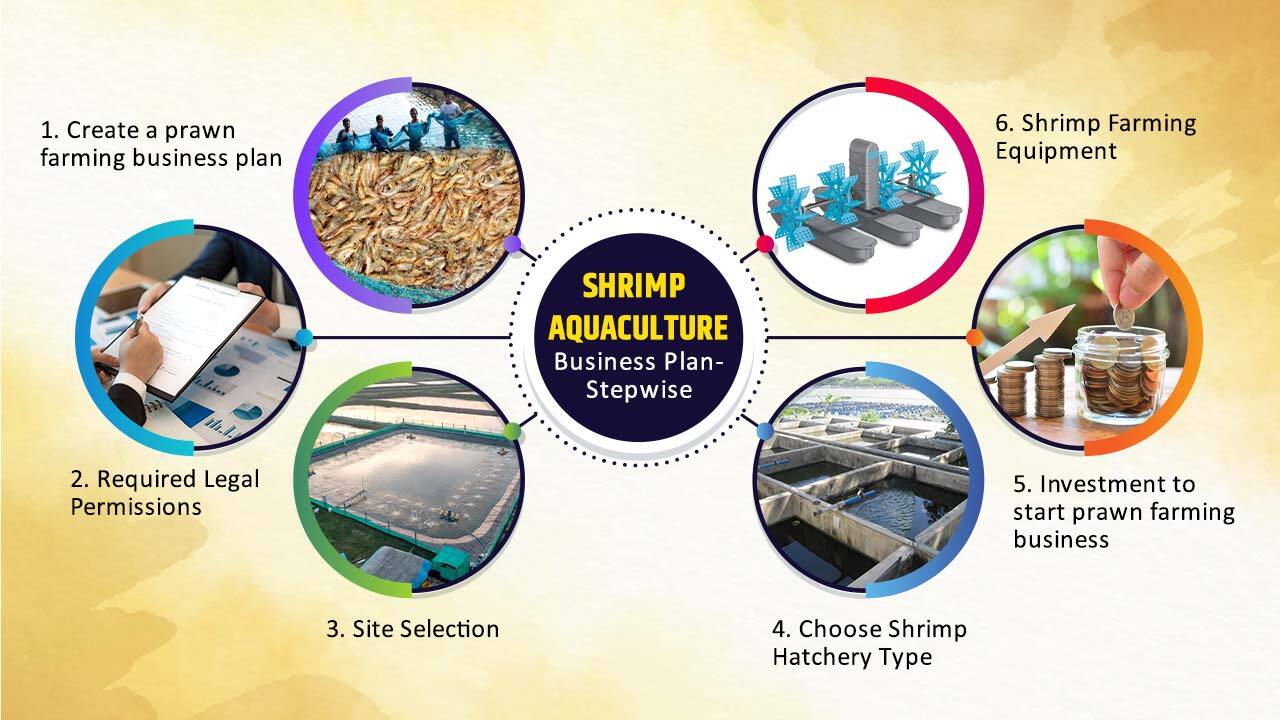Shrimp Farming – Profitable Aquaculture Business In India

The farming sector is pervasive, even beyond our imagination. This is because it has so many industries which are categorised naturally, such as agriculture, aquaculture like shrimp farming, fish farming, floriculture, and food processing, and so many sectors are available. Every industry has its speciality and profitability, and each one is as important as the farming of fruits and vegetables. Natural species farming is also essential because it is a growing part of agriculture, and aquaculture is one of them.
Aquaculture is a kind of farming which includes aquatic animals and plants and their breeding, raising and end up with harvesting. It can be done in all types of water environments in controlled conditions. Aquaculture is mainly used to produce food and commercial products, restore healthier habitats and rebuild endangered species populations.
So, now we would like to introduce you to one of the widespread aquaculture shrimp farming, India’s most popular and profitable aquaculture business.
Shrimp farming is a kind of aquaculture business mainly executed in marine or freshwater. Shrimps are commonly known as prawns and scampi and are highly reared for commercial purposes (human consumption). As a worldwide report, Japan’s Per capita consumption of shrimp is the highest, followed by the USA and Europe. Moreover, 70-75% of shrimp consumption in the world is consumed by developed countries. So, let’s start with knowing different types of Shrimp are available.
Different Types of Shrimp

There are several types of shrimp available worldwide which are consumed as seafood. So, here we are showing the top most common and most consuming shrimps in India & other countries also.
1. Vannamei Shrimp Farming
Although Vannamei shrimps are no longer profitable due to facing diseases or perhaps residual effects in the pond. This happens because sometimes, the little quantity of water left in the pond after cultivation is not appropriately discharged through the canal, and the same stink or dirty water refills into the pond.
Production – Vannamei shrimp is a freshwater prawn which can be easily produced in freshwater but only where there chloride concentration is as low as 300 ppm. Around 11-12, gram Vannamei+ Shrimp are harvested in 4 to 5 months, and 150–500 kg/ha will be harvested in 1–2 crops per year.
Benefit – Vannamei shrimps are generally healthy and nutritious food and help strengthen bones and build muscle tissues.
2. Brown Shrimp
This variety of brown shrimp is a kind of small shellfish that is quite similar to the prawns but has a smaller and flatter body.
Production – The growth of Brown shrimps depends on temperature and salinity, although it can grow up to 7 inches in length. Generally, they have a short life span, less than 2 years.
Benefit – They have a more mineral flavour compared to other varieties, but it is not safe to eat raw. Brown shrimps are highly used for culinary purposes.
3. White Shrimp
It is one of the most common shrimp species in the world which is one of the most profitable species for prawn farming.
Production – Compared to other shrimp varieties, white shrimps grow faster, which basically depends on water temperature and salinity. However, it is an annual crop with a short life span of fewer than 2 years. Loamy, sandy and well-drained soil is ideal for growing white shrimp.
Benefit – White shrimp is more tender and sweet compared to other shrimp varieties. It is highly suitable for indoor shrimp farming.
4. Giant Tiger Prawn
Giant Tiger shrimps are mainly grown in coastal areas, and it is an enormous prawn variety that grows up to 33 cm.
Production – This variety of Giant Tiger Prawn can live underwater for up to 5 years and is generally reared for commercial purposes.
Benefit – It is suitable for eating purposes, contains high protein content, and has enough iron, zinc and vitamin E.
5. Giant Freshwater Prawn
This variety is one of the most important species and is highly used commercially. It can maximumly grow around 29 cm to 33 cm male and female, respectively.
Production – Harvesting of freshwater prawns is started from their 5 months of age. Generally, they live up to 3 years.
Benefit – Freshwater prawn has a delicate and sweet taste and contains 17.6 g of protein.
Types of Shrimp Farming

There are many types of shrimp farming techniques in which all shrimp cultures are included. Let’s check the types of shrimp farming that help you to categorise prawn farming to start a business according to your requirements.
1. Organic Shrimp Farming
Organic shrimp farming means rearing a limited number of shrimps in a pond without adulteration of hormones or antibiotics and chemical preservatives. Legal and Organic standards do not allow phosphates and non-phosphates treatment. The primary motive of organic shrimp farming is to produce healthy and disease-free natural prawns. An organic shrimp farm is quite costly compared to conventional prawn farming.
2. Indoor Shrimp Farming
You can start shrimp farming at home by setting up a shrimp tank. For that, you have to set up a pump and a filter system with some artificial rock and plants for shrimps to hide. Then put the heater and thermostat in the aquarium to make a growing temperature and fill the tank with distilled water.
3. Biofloc Shrimp Farming
Biofloc shrimp farming entirely depends on the traditional shrimp culture. Usually, conventional shrimp farming requires frequent water exchange for shrimps. But the biofloc shrimp technique reduces the need to exchange water frequently. Installing a biofloc shrimp tank costs Rs 1.50 lakh (two tanks). Some state governments also provide subsidies of 40% on biofloc unit installation. In the biofloc unit, you can also farm saltwater shrimps song with freshwater shrimps.
3. Paddy Shrimp Farming
As the farmers are adapting modern farming methods over conventional methods. So, farmers prefer rice mixed shrimp farming instead of single prawn farming, also known as paddy shrimp farming. This paddy shrimp farming investment is expected to be Rs. 7719 per acre.
4. Intensive Shrimp Farming
Intensive aquaculture prawn farming refers a freshwater shrimp farming in concrete ponds with continuous aeration that may achieve more than 5 000 kg/ha/yr output.
How Profitable is Shrimp Farming in India?
Scampi farming in India is profitable as the white legs shrimps currently have the highest demand in the seafood market. Growing demand for seafood products is one of the significant factors that is fuelling the growth of the seafood industry.
The increased urban population mainly leads to the demand for seafood products. So, the consumer demand for fresh and frozen seafood is also a significant benefactor to the growth in the global shrimp market. So, because of that, this business is profitable and highly lucrative for entrepreneurs willing to start an aquaculture project.
Shrimp Aquaculture Business Plan – Stepwise

Here are some shrimp farming tips which you should follow before starting your prawn farming business. Then, following the business plan we have mentioned, let’s check that you will surely earn a good shrimp farming profit.
1. Create a Prawn Farming Business Plan
Before starting a prawn farm, you should create a shrimp farming strategy, or if you are planning to start indoor shrimp farming, you must create an indoor shrimp farming business plan. Overall, it would help if you had a business plan before starting any business.
Your business plan must include cost, investment, required human resources, and so many things because it gives you an idea of your expenses and requirements.
You must create a perfect business plan if you are looking for funding to start your business. Before funding, every investor asks for an excellent business plan that convinces them to invest in your business.
2. Required Legal Permissions
This kind of aquaculture business requires legal permissions in many states or other regions. So, you must have obtained a licence from your local authority to pursue your business. But if you are doing prawn farming at home, so you don’t need any permission.
3. Site Selection
If you want to earn a good prawn farming business profit, you should check the quality of the pond because good prawn farming depends on the quality of water. Usually, shrimps prefer to eat insect larvae and algae, so you cannot keep them in a fresh, drugged pond. Instead, you can keep them in water containers, swimming pools or large fish tanks.
4. Choose Shrimp Hatchery Type
Before starting, you have to choose the shrimp hatchery type:-
- Small scale hatchery
It is very common to rear shrimps on a small-scale basis. Small-scale hatchery, often done in smaller tanks, which are less than ten tons, is considered low-density shrimps.
- Medium scale hatchery
It includes Greenwater hatcheries with a large amount of water and low-density shrimps.
- Large scale hatchery
These large-scale hatcheries include a conservative environment. They rear high-density shrimps around 15 to 30 tons tanks.
5. Investment to Start Prawn Farming Business
As we know, investments are likely to depend on the business’s size, production and requirements. To start this prawn farming business, you need to invest around Rs 10 lacs to 15 lacs initially, and this investment includes manpower, maintenance, and many things required in business.
6. Shrimp Farming Equipment
Commercial farming of shrimp requires specific tools or equipment. However, shrimp farming equipment ultimately depends on farming techniques and farm size.
So, this was the information regarding prawn farming with a perfect strategy and business plan. We hope you find this aquaculture content informative and knowledgeable, helping you to start shrimp farming. For more such kind of information, stay tuned with Tractor Guru, where you can get to know about tractors and farming.
Related Blogs:
Chicken Farming



